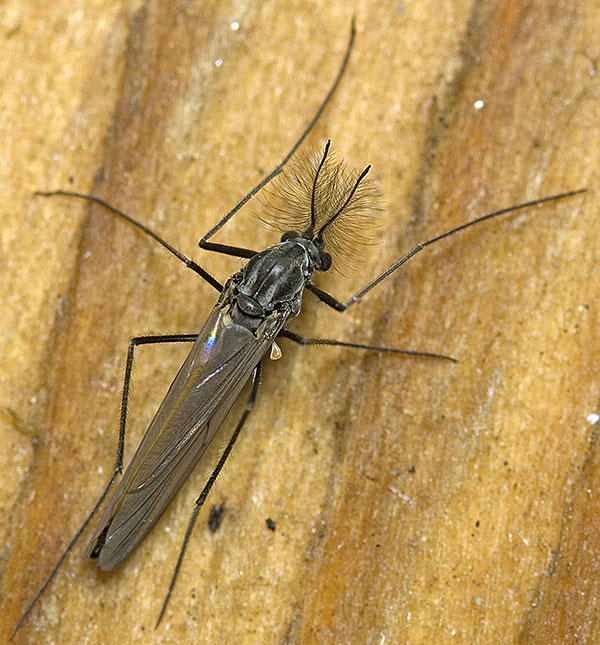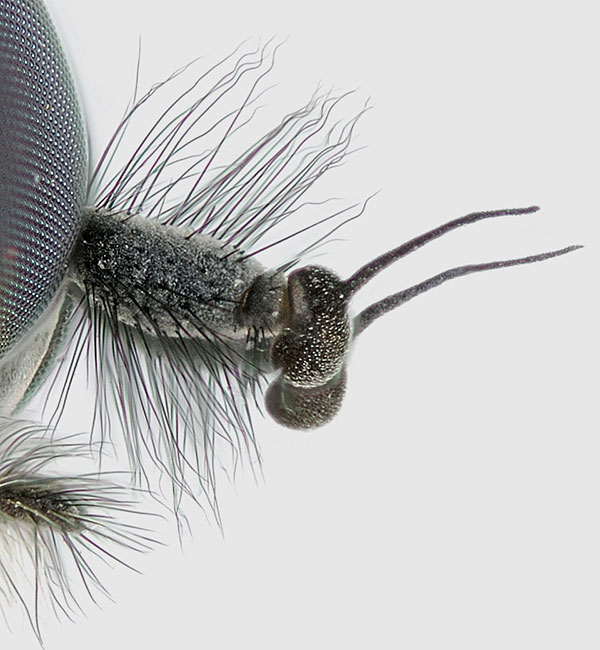Diptera.info :: General Diptera forums :: Overviews
Who is here? 1 guest(s)
|
Antennae types
|
|
| Tony T |
Posted on 11-04-2008 01:54
|
|
Member Location: New Brunswick, Canada Posts: 662 Joined: 08.02.07 |
8 April 2008, New Brunswick, Canada. Chironomidae Plumose antennae of male chironomid Tony T attached the following image:  [118.25Kb] |
|
|
|
| Tony T |
Posted on 11-04-2008 22:55
|
|
Member Location: New Brunswick, Canada Posts: 662 Joined: 08.02.07 |
The entire fly
Tony T attached the following image:  [112.8Kb] |
|
|
|
| Tony T |
Posted on 13-04-2008 18:36
|
|
Member Location: New Brunswick, Canada Posts: 662 Joined: 08.02.07 |
Antennae distinctive: scape lengthened, expanded and densely haired; pedicel short; basal flagellomere kidney-shaped, either concave or convex (as here) along anterior margin below arista; dorsal arista. Entire fly: HERE Tony T attached the following image:  [72.84Kb] Edited by Tony T on 13-04-2008 18:46 |
|
|
|
| Tony T |
Posted on 16-04-2008 16:05
|
|
Member Location: New Brunswick, Canada Posts: 662 Joined: 08.02.07 |
Antenna of Drosophila sp. It seems that this type of antenna (arista plumose with dorsal and ventral rays) may be characteristic (diagnostic?) for Drosophilidae. Image of entire fly HERE Tony T attached the following image:  [41.56Kb] |
|
|
|
| phil withers |
Posted on 16-04-2008 17:22
|
|
Member Location: Lyon, France Posts: 521 Joined: 04.03.08 |
If you want a real challenge, how about doing your magic on a psychodid ? |
|
|
|
| Tony Irwin |
Posted on 16-04-2008 22:32
|
|
Member Location: Norwich, England Posts: 7232 Joined: 19.11.04 |
Tony T wrote: Antenna of Drosophila sp. It seems that this type of antenna (arista plumose with dorsal and ventral rays) may be characteristic (diagnostic?) for Drosophilidae. The characteristic feature of many drosophilid antennae is the terminal fork - it's difficult to decide whether the dorsal or ventral bit of the fork is the main stem of the arista. Other flies have dorsal and ventral rays, but the end of the arista is obviously a single process, not forked. (though I think Periscelidae may be another "fork-ended family"?) Edited by Tony Irwin on 16-04-2008 22:40 Tony ---------- Tony Irwin |
|
|
|
| Tony T |
Posted on 17-04-2008 13:08
|
|
Member Location: New Brunswick, Canada Posts: 662 Joined: 08.02.07 |
Thanks Tony, so not diagnostic but maybe a useful character. Looking at some drawings I see that Periscelidae and Asteiidae have similar antennae. Phil: just waiting for a Psychodid to fly into my net; none coming out of my drains  |
|
|
|
| Jump to Forum: |















